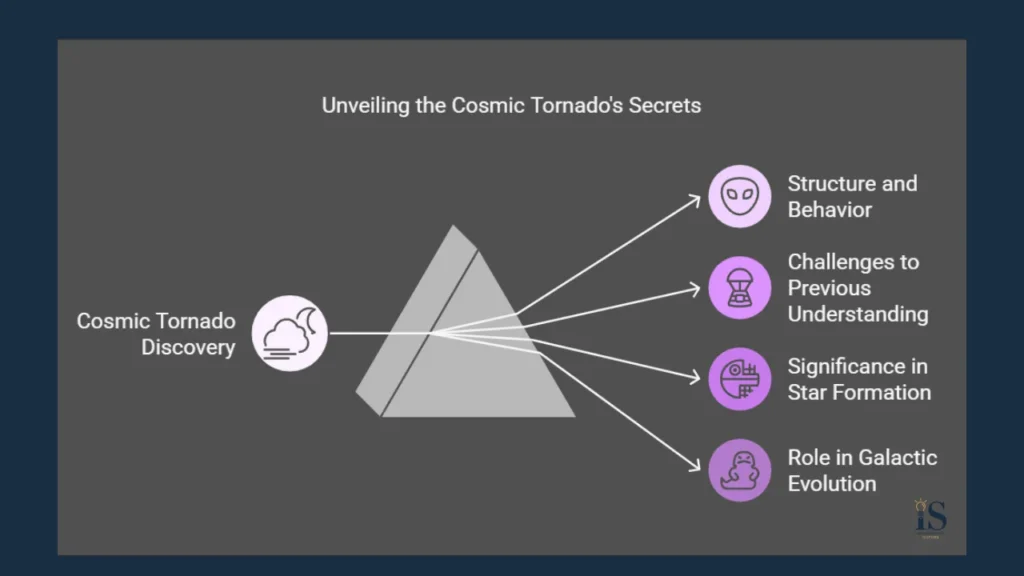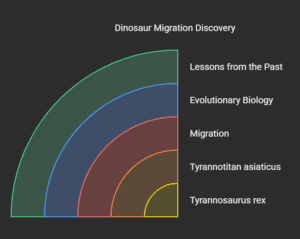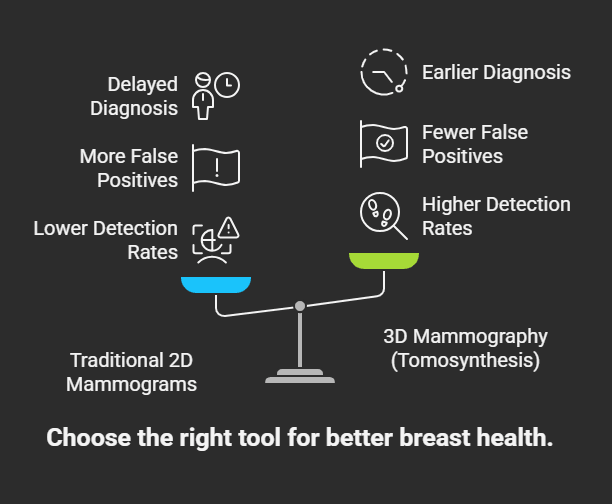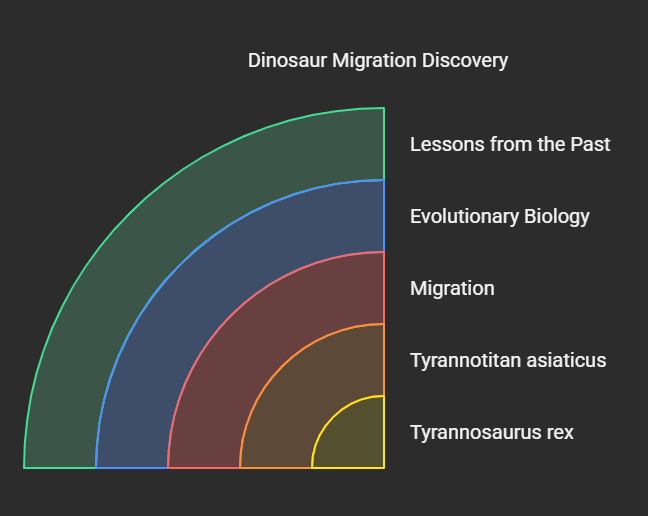Let’s dive into the mysteries of the universe
Introduction
In the quiet of the night as you watch the moon rise, have you ever wondered What else is hiding among those stars? Fortunately, advanced technology such as NASA’s James Webb Space Telescope (JWST) has been brought to this puzzle and we are now closer than ever to unlocking a major portion of these cosmic mysteries. Just a few months ago, JWST helped provide the first detailed look at an awe-inspiring phenomenon, a “cosmic tornado.” But here’s the twist: some of this celestial marvel isn’t all it’s cracked up to be.
As someone who has studied astronomy for years and closely followed developments in space exploration, I’m excited to explain how this discovery came about. In this blog, we’ll look at what was so special about this “tornado,” get to the bottom of what it really is, and consider why this matters not just to scientists, but to all of those who are curious about the natural world. When you finish reading, you will have greater appreciation for just how our universe operates — you might even feel like looking up more!
What Is a Cosmic Tornado, Exactly?
The Perception of Motion in Space
To say that something is a “cosmic tornado” may at first glance conjure images of spiraling winds tearing through galaxies. But in real life, this term describes large gas structures that spiral outward from star-forming areas. These shapes look a lot like tornadoes, with their long-form appearances and dynamic action — but they’re not whipping like storms on Earth. Instead, they are static structures lit up by high-energy radiation from nearby youthful stars.
Incisively, why does it look like motion?
The clouds of gas are illuminated by the energy from the stars, which causes them to glow at different wavelengths. When the telescopes such as JWST scanned this light, those emissions formed shapes that mimic motion, creating the “tornado” illusion.
What JWST Taught Us About Perspective
Prior to JWST, Hubble and other telescopes could only give us blurry snapshots of this kind of activity. JWST, with its cutting edge infrared imaging, also penetrates huge clouds of dust, shedding pale light on information that had been hidden before. With this, astronomers can study the composition and behavior of these structures like never before.
Dr. Jane Rigby, Deputy Project Scientist for JWST Operations: “The James Webb Space Telescope is opening doors we didn’t know existed.” “Each image seems like peeling away another layer of the universe.”
Hidden in Plain Site: Part of the Tornado Isn’t What We Thought
Peeling Back the Layers of Deception
Perhaps the most fascinating component of this discovery is that rather than gas, portions of the “tornado” consist of streams of charged particles, or stellar winds.
Stellar winds — fast-moving streams expelled by massive stars during their lifetimes. They interact with surrounding material, forming filamentary structures that look kind of like tornado funnels.
It would have been almost impossible to tell the difference between clouds of gas and stellar winds without the precision of JWST.
This discovery contradicts what we thought we knew about the formation and development of these features through time. It shows why scientists should always bring new data to bear on old theories: That’s a practice at the heart of scientific advancement.
Why Does This Matter? Insights to Star Formation and Beyond
A Closer Look at Stellar Nurseries
The cosmic tornadoes are important for understanding star formation, one of the basic processes of galaxy evolution. Here’s why:
Fueling New Stars: The gas within these structures is the raw material from which new stars are born. Watching these objects provides insights into how molecular clouds collapse under their own gravity to create protostars.
Shaping Galaxies: Young stars have a strong effect on the matter distribution within galaxies, through stellar winds and radiation pressure. Over billions of years, these forces carve galactic arms and ignite chain reactions of star birth.
Untangling the Complexity of Chemicals: These are complex molecules that may be embedded in these regions that are detected by JWST and are providing clues to the very building blocks of life.
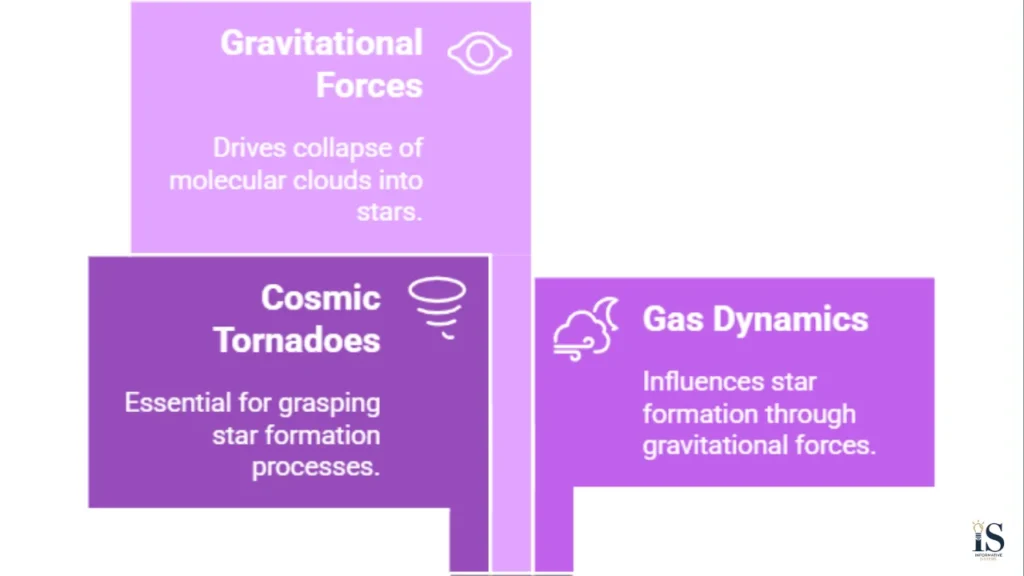
Life on Earth in the Long Term
It can feel distant and abstract stuff, these cosmic tornadoes, but it also reflects a little bit about our place in the universe. Every atom in your body — carbon, oxygen, nitrogen — was forged in dying stars. Through the study of these phenomena we connect with the cosmic cycle of creation and destruction that underlies existence itself.
Personal Reflection: What Interests me About Space Exploration
As a kid, I would lie on the lawn, look at the stars and wonder if anyone else was doing the same. Fast forward to now, and just thinking about all that we’ve done to explore the cosmos still gives me goosebumps. Findings like the cosmic tornado remind me of the boundless curiosity of humankind and our technological prowess that defies all limitations.
As a kid, I vividly remember seeing an image of the Hubble Space Telescope’s famous Pillars of Creation. Me, the twiggy kid with the plastic telescope, watching JWST take everything to another level makes me very hopeful for kids to come. This would be significant in itself, but that’s just the tip of the iceberg.
Conclusion: Upward, Together
The recent discovery of a “cosmic tornado” from the James Webb Space Telescope isn’t just an awe-inspiring visual — it’s shaping our understanding of the cosmos as well as our earlier assumptions about it. This achievement highlights the importance of perseverance, ingenuity and teamwork in science, from revealing unseen elements such as stellar winds, to informing processes like star formation.
So, next time you look up at the night sky, keep in mind: every pinprick of light has untold stories waiting to be told. Let’s continue to ask questions, search for answers and be amazed at the things above us.
Want to learn more about the James Webb Telescope? Click on this link

